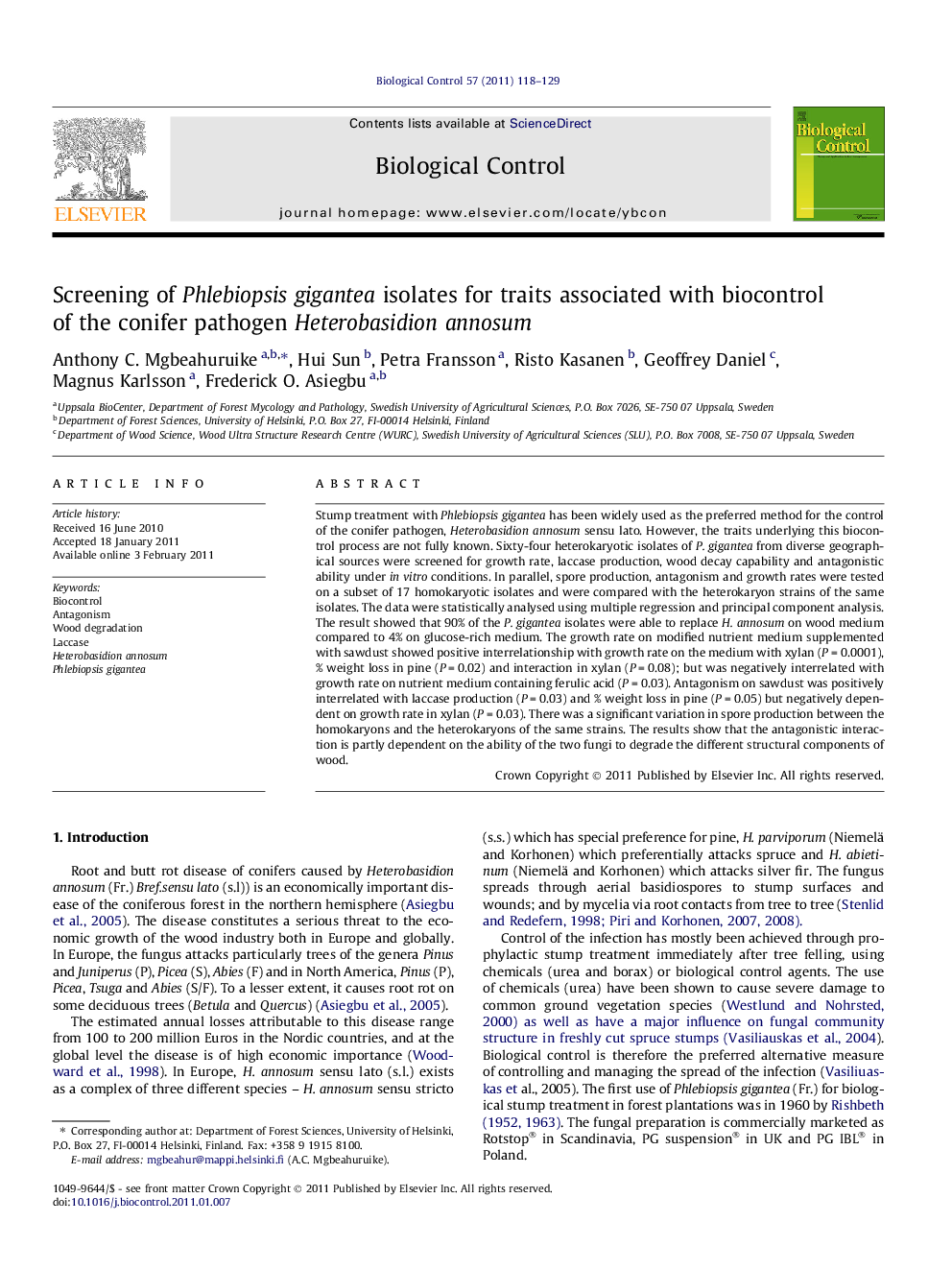| Article ID | Journal | Published Year | Pages | File Type |
|---|---|---|---|---|
| 4504208 | Biological Control | 2011 | 12 Pages |
Stump treatment with Phlebiopsis gigantea has been widely used as the preferred method for the control of the conifer pathogen, Heterobasidion annosum sensu lato. However, the traits underlying this biocontrol process are not fully known. Sixty-four heterokaryotic isolates of P. gigantea from diverse geographical sources were screened for growth rate, laccase production, wood decay capability and antagonistic ability under in vitro conditions. In parallel, spore production, antagonism and growth rates were tested on a subset of 17 homokaryotic isolates and were compared with the heterokaryon strains of the same isolates. The data were statistically analysed using multiple regression and principal component analysis. The result showed that 90% of the P. gigantea isolates were able to replace H. annosum on wood medium compared to 4% on glucose-rich medium. The growth rate on modified nutrient medium supplemented with sawdust showed positive interrelationship with growth rate on the medium with xylan (P = 0.0001), % weight loss in pine (P = 0.02) and interaction in xylan (P = 0.08); but was negatively interrelated with growth rate on nutrient medium containing ferulic acid (P = 0.03). Antagonism on sawdust was positively interrelated with laccase production (P = 0.03) and % weight loss in pine (P = 0.05) but negatively dependent on growth rate in xylan (P = 0.03). There was a significant variation in spore production between the homokaryons and the heterokaryons of the same strains. The results show that the antagonistic interaction is partly dependent on the ability of the two fungi to degrade the different structural components of wood.
Graphical abstractFigure optionsDownload full-size imageDownload as PowerPoint slideResearch highlights► We investigated traits important for the biocontrol of Heterobasidion spp. by Phlebiopsis gigantea. ► Several isolates of P. gigantea were screened for laccase production, wood decay and antagonistic ability. ► A significant number of the isolates out-competed H. annosum in wood media than in glucose rich medium. ► Antagonism on sawdust was statistically positively interrelated with laccase production. ► P. gigantea antagonism was partly dependent on ability to degrade wood components.
